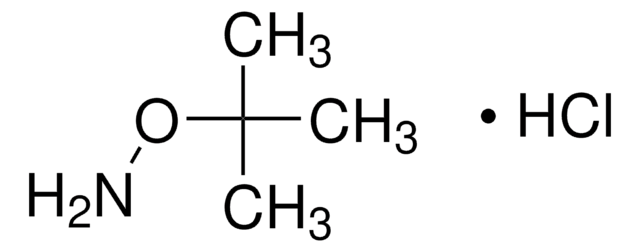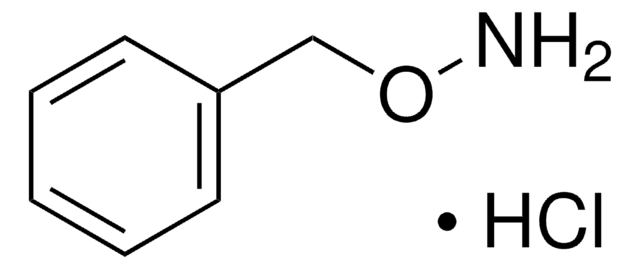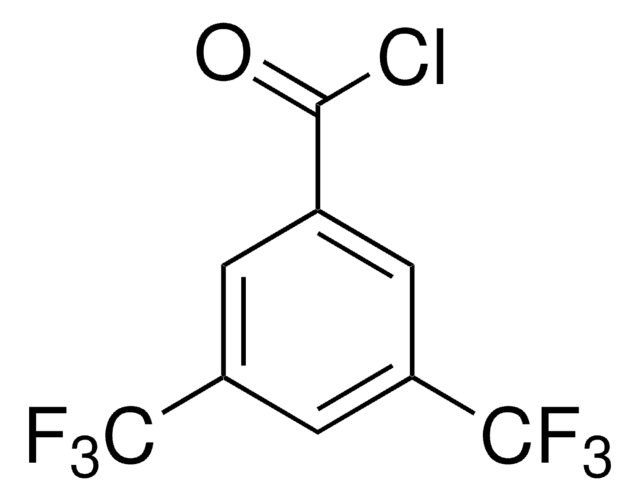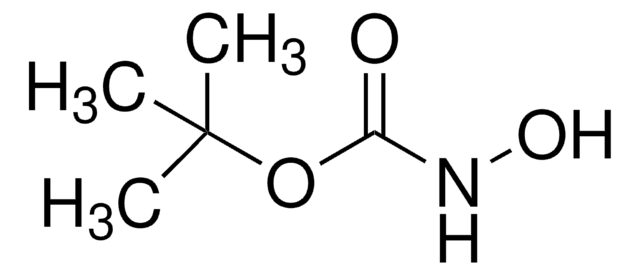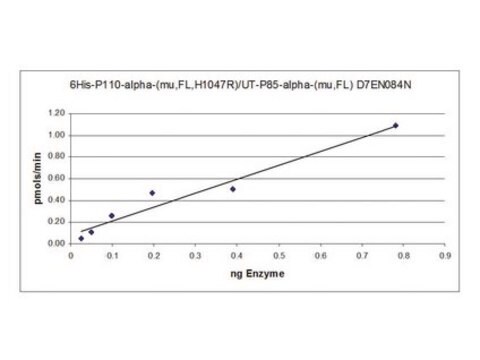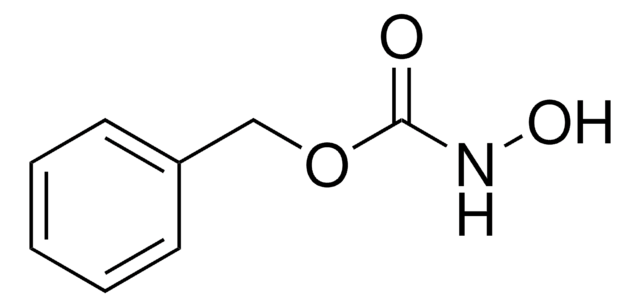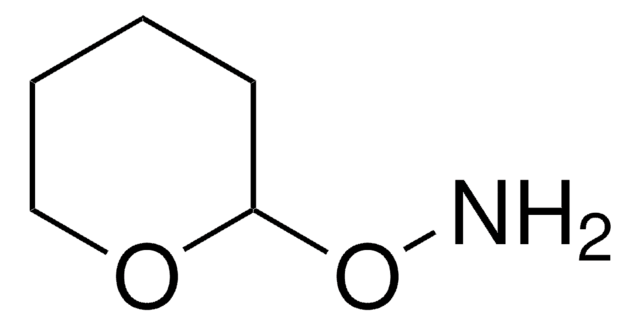194751
N-tert-Butylhydroxylamine hydrochloride
≥98%
Se connecterpour consulter vos tarifs contractuels et ceux de votre entreprise/organisme
About This Item
Formule linéaire :
(CH3)3CNHOH · HCl
Numéro CAS:
Poids moléculaire :
125.60
Beilstein:
3546053
Numéro CE :
Numéro MDL:
Code UNSPSC :
12352100
ID de substance PubChem :
Nomenclature NACRES :
NA.22
Produits recommandés
Essai
≥98%
Forme
solid
Pf
183-185 °C (lit.)
Chaîne SMILES
Cl.CC(C)(C)NO
InChI
1S/C4H11NO.ClH/c1-4(2,3)5-6;/h5-6H,1-3H3;1H
Clé InChI
DCSATTBHEMKGIP-UHFFFAOYSA-N
Vous recherchez des produits similaires ? Visite Guide de comparaison des produits
Application
N-tert-Butylhydroxylamine hydrochloride was used in spin trapping of short-lived radicals. It was also used in the synthesis of α-ketoamides and 3-spirocyclopropanated 2-azetidinones.
Code de la classe de stockage
11 - Combustible Solids
Classe de danger pour l'eau (WGK)
WGK 3
Point d'éclair (°F)
Not applicable
Point d'éclair (°C)
Not applicable
Équipement de protection individuelle
Eyeshields, Gloves, type N95 (US)
Faites votre choix parmi les versions les plus récentes :
Déjà en possession de ce produit ?
Retrouvez la documentation relative aux produits que vous avez récemment achetés dans la Bibliothèque de documents.
Les clients ont également consulté
Yu-Kyung Kim et al.
Clinical hemorheology and microcirculation, 40(4), 315-324 (2009-01-08)
Irradiation has been shown to induce biochemical changes in stored red blood cells (RBCs) and to generate reactive oxygen species (ROS). This study evaluated the hemorheological properties, the degree of lipid peroxidation and the oxidative susceptibility of irradiated RBCs. Furthermore
Hyun Jeong Kim et al.
Redox report : communications in free radical research, 10(6), 287-293 (2006-01-28)
Heat shock may increase oxidative stress due to increased production of reactive oxygen species and/or the promotion of cellular oxidation events. Therefore, compounds that scavenge reactive oxygen species may regulate heat shock-induced cell death. Recently, it has been shown that
Jin Hyup Lee et al.
Carcinogenesis, 25(8), 1435-1442 (2004-03-16)
Exposure of cells to ionizing radiation leads to formation of reactive oxygen species (ROS) that are associated with radiation-induced cytotoxicity. Therefore, compounds that scavenge ROS may confer radioprotective effects. Recently, it has been shown that the decomposition product of the
David W Killilea et al.
Antioxidants & redox signaling, 5(5), 507-516 (2003-10-29)
Iron accumulates as a function of age in several tissues in vivo and is associated with the pathology of numerous age-related diseases. The molecular basis of this change may be due to a loss of iron homeostasis at the cellular
On the anti-aging activities of aminoguanidine and N-t-butylhydroxylamine.
A R Hipkiss
Mechanisms of ageing and development, 122(2), 169-171 (2001-02-13)
Notre équipe de scientifiques dispose d'une expérience dans tous les secteurs de la recherche, notamment en sciences de la vie, science des matériaux, synthèse chimique, chromatographie, analyse et dans de nombreux autres domaines..
Contacter notre Service technique
